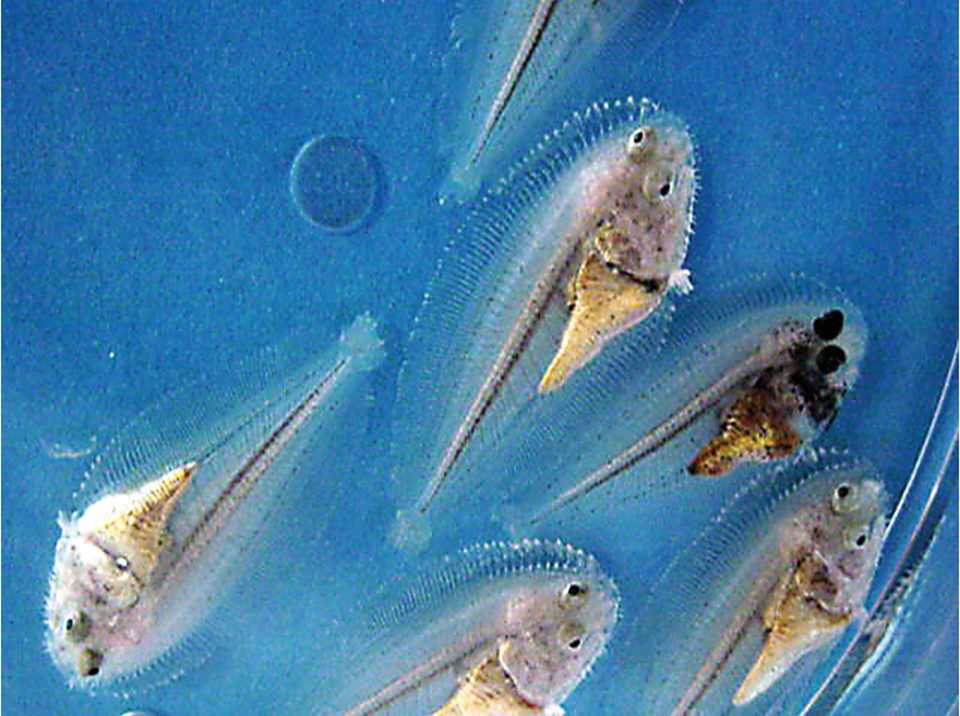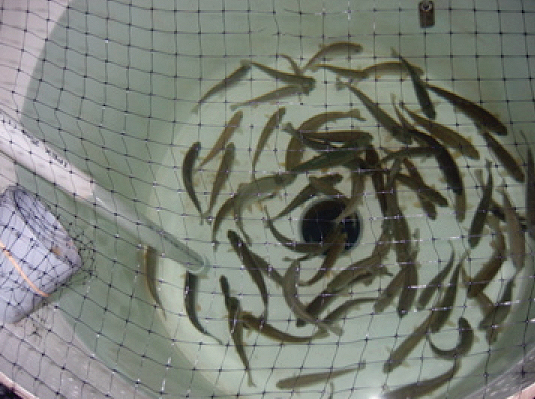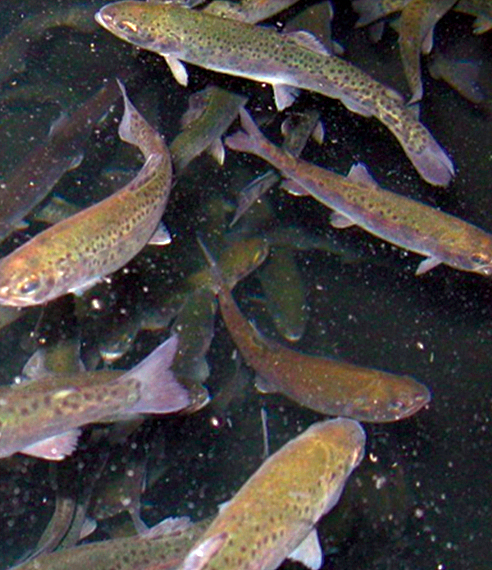Suitable live feeds are difficult to acquire

Senegal sole (Solea senegalensis) are flatfish that live on the sandy bottoms of the Mediterranean and South Atlantic coasts. In the 1980s, the species was considered a prime candidate for diversifying Mediterranean aquaculture due to its high market value and easy domestication and capture. Now, over 20 years after the initial trials, some aspects of Senegal sole biology are still unknown and some phases of culture – such as weaning juveniles to artificial diets – need improvement.
Larval production
Ongrowing methods for Senegal sole are well known and mainly based on the capture of juveniles from the wild. However, relatively little is known about their larval biology.
As many other marine fish larvae, Senegal sole larvae are undeveloped at hatching, with unpigmented eyes, closed mouths and anuses, and very small yolk reserves. When the yolk is depleted and mouths and intestinal tracts open, the animals’ stomachs are still not functional. The larvae are unable to eat artificial diets, and live preys are needed.
In the wild, Senegal sole larvae ingest mollusk larvae and copepods, but these are difficult to supply in large amounts and must be replaced in aquaculture operations by easy-to-culture live preys such as Brachionus sp. rotifers and artemia nauplii. Rotifers are fed during the first 10 days after hatching, whereas artemia nauplii are used from four or five days after hatching until weaning to inert diets.
Both rotifers and artemia are lacking in the polyunsaturated fatty acids essential for marine fish larval development. Therefore, live prey need to be enriched using fatty acid-rich emulsions that provide the essential fatty acids to the developing larvae.
Importance of polyunsaturated fatty acids
Retarded growth, delayed metamorphosis, pigmentation problems, and high mortalities are the results of inadequate levels of polyunsaturated fatty acids in sole diets, which results in high economic losses for fish farmers.
The essential polyunsaturated fatty acids for marine fish larvae belong to the omega-6 and omega-3 families. Arachidonic acid (ARA) is an omega-6, whereas docosahexaenoic acid (DHA) and eicosapentaenoic acid (EPA) are omega-3s. Marine fish cannot synthesize these fatty acids, so they consequently must be provided in diets.
Several experiments to determine the roles of different dietary concentrations of ARA, DHA, and EPA on Senegal sole larval development were carried out by the author in Spain. Promising results were obtained, and feed that produces high survival and fewer unpigmented juveniles may be available soon.
Study setup
Mixtures of commercial oils rich in the fatty acids were prepared with olive oil and vitamin supplements to produce emulsions with zero, low, medium, and high levels of each fatty acid. The oil mixtures were emulsified using soy lec-ithin and equal amounts of water. For the studies on DHA and ARA, the EG strain of artemia was used, whereas Artemia persimilis, an Argentinean strain with low initial levels of EPA, was selected for the EPA requirement study.
Senegal sole eggs were obtained from broodstock held under natural pho-to and thermal periods. Newly hatched larvae were stocked at 50 larvae per liter into twelve 35-l, 150-µ mesh baskets distributed among four 1,500-liter holding tanks. The tanks were connected to a recirculation unit with mechanical, biological, and ultraviolet filters.
Water temperature was maintained at 19 ± 1 degrees-C and salinity was 34 ppt. Photoperiod was maintained at 18 hours of light per day, and mild aeration was provided. Standard length and dry weight were measured periodically. Survival and pigmentation success were determined at the end of the experiments, when samples for lipid analysis were also taken.
Results
A clear relationship was observed between the dietary content of ARA, the accumulation of ARA in larval tissues, and the pigmentation rate in Senegal sole larvae. Increasing ARA in the diet resulted in a higher proportion of unpigmented juveniles.
The results from the DHA experiment suggested a low requirement for this fatty acid for normal larval development. The endogenous reserves of the newly hatched larvae, rich in DHA, allowed successful development if the larvae were fed a DHA-deficient diet. Furthermore, the natural feeding of sole is based on polychaetes, which are poor in DHA but rich in EPA.
For EPA, however, low dietary levels produced adequate larval growth, although unpigmented juveniles were produced. This might be explained by considering that both ARA and EPA are involved in the synthesis of eicosanoids, which are involved in the development of pigmentation in flatfish.
(Editor’s Note: This article was originally published in the September/October 2006 print edition of the Global Aquaculture Advocate.)
Now that you've reached the end of the article ...
… please consider supporting GSA’s mission to advance responsible seafood practices through education, advocacy and third-party assurances. The Advocate aims to document the evolution of responsible seafood practices and share the expansive knowledge of our vast network of contributors.
By becoming a Global Seafood Alliance member, you’re ensuring that all of the pre-competitive work we do through member benefits, resources and events can continue. Individual membership costs just $50 a year.
Not a GSA member? Join us.
Author
-
Mireia Villalta
Institut de Recerca/Technologia Agroalimentaries Centre d’Aqüicultura
Unitat de Cultius Experimentals
Crta. de Poblenou s/n
P.O. Box 200
43450 Sant Carles de la Ràpita
Tarragona, Spain[32,115,101,46,97,116,114,105,64,97,116,108,97,108,108,105,118,46,97,105,101,114,105,109]
Tagged With
Related Posts

Aquafeeds
A look at phospholipids in aquafeeds
Phospholipids are the major constituents of cell membranes and are vital to the normal function of every cell and organ. The inclusion of phospholipids in aquafeeds ensures increased growth, better survival and stress resistance, and prevention of skeletal deformities of larval and juvenile stages of fish and shellfish species.

Health & Welfare
Algae shows promise as alternative DHA source in rainbow trout diets
A growth trial in Canada evaluated the use of algae biomass to increase the concentration of long-chain polyunsaturated fatty acids in the tissues of rainbow trout.

Aquafeeds
Alternative lipids spare fish oil in rainbow trout feeds
Alternative lipids have achieved varied success in ensuring adequate growth and fatty acid composition in fillets. The authors evaluated rainbow trout raised on diets containing fish oil or a blend of fish and standard or modified lipids varying in fatty acid composition.

Aquafeeds
Aquafeed moonshots at the F3 ‘talent show’
At the F3 (fish-free feed) Companies Got Talent event in Burlingame, Calif., last week, alternative (non-marine) aquafeed ingredient companies spoke of decoupling aquaculture from fishmeal and fish oil in their quest for greater sustainability.


